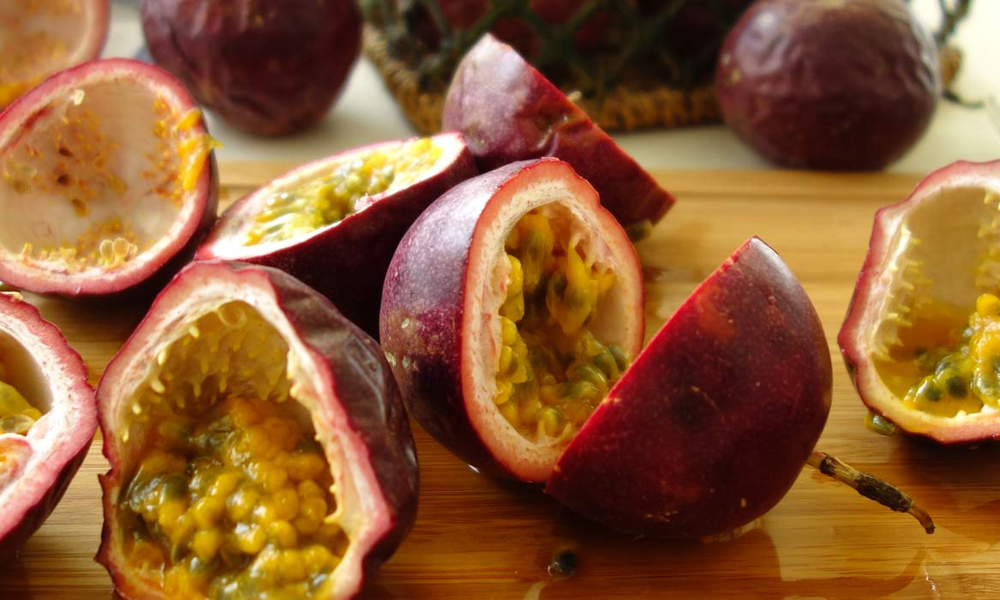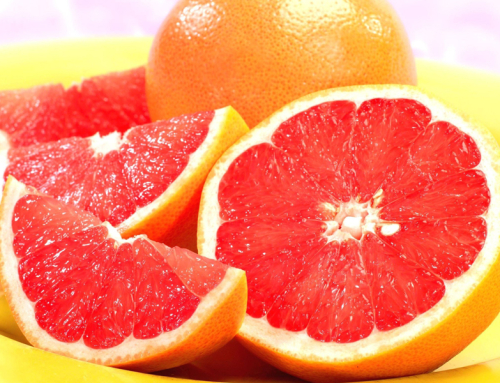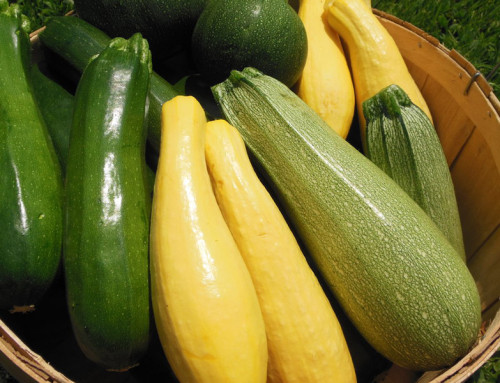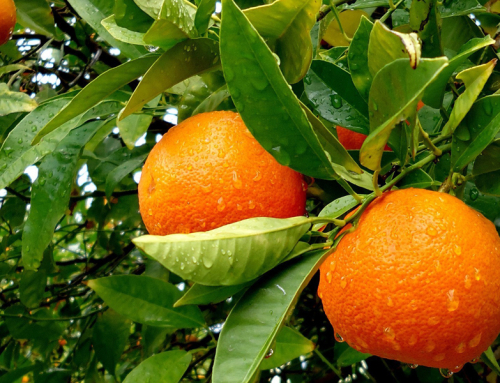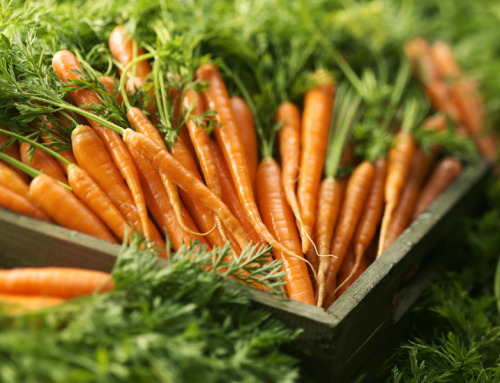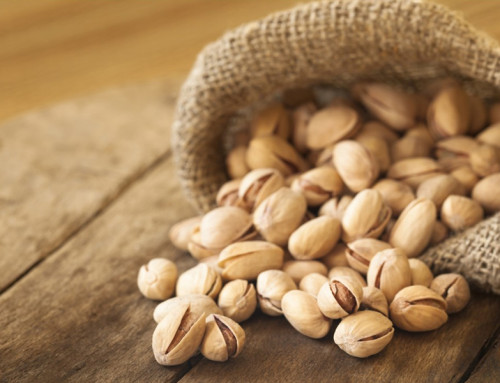- 1 fruit without refuse (approx. 18 g) – 17 calories
- 1 cup (approx. 236 g) – 229 calories
- 100 g – 97 calories
Passion fruit is tropical fruit that grows on a creeper vine known as the passion flower. This nutrient-rich fruit is also known as granadilla and is believed to have originated in several South American countries, namely Brazil, Paraguay, and Argentina. Juicy and flavorful, this fruit is both sweet and tart in taste. From the genus Passiflora of the family Passifloraceae, this exotic fruit is full of nutrients for health and wellness. The Spanish named the plant based on the resemblence of the flowers to a crucifix.
Basic Information
Many countries across the globe grow passion fruit for commercial purposes. The climbing vines require warmer climates. These plants can grow around 20 feet per year and are known to produce fruit for up to 7 years. Two varieties are typically grown commercially, purple and yellow. The tough outer membrane of these slightly ovular fruits surrounds the inner fruit. The fruit is a cluster of sacs that are filled with juicy meat and many seeds. While the yellow passion fruit may be larger on the outside, the purple variety actual contains a higher proportion of the juicy pulp that is less acidic with a richer flavor and aroma.
Nutritional Components in Passion Fruit
This pulpy fruit is low in fat and has 97 calories per 100 grams of the edible fruit. A great source of fiber, granadilla contains more than one-fourth of your daily recommended intake for this nutrient. This exotic fruit has substantial amount of vitamins and minerals, most notably Vitamins A and C, copper, iron, and phosphorous. With additional phytonutrients and medicinal alkaloids, passion fruit can give a nutritional boost to any diet.
Benefits to Health
- Immune Support
This juicy fruit has been used for centuries for its ability to enhance the immune system. While the antioxidants help to scavenge free radicals to prevent oxidative damage to cells, the vitamins can stimulate white blood cell activity to give your body some protection against certain types of illness. - Digestion
The fiber, vitamins, and minerals that are found in passion fruit can help the entire digestive system. The fiber helps to remove toxins and cholesterol from the body and promote regularity in bowel movements. The minerals found in this fruit may have an additional protective benefit to the colon against cancer. - Eye Health
The vitamins and flavanoids in this juicy fruit are essential to healthy eyesight and may also help to reduce the risk of certain eye diseases, such as night blindness, macular degeneration, and cataracts. - Insomnia and Restlessness
Certain alkaloids and flavanoids in the fruit of the passion flower plant, such as the alkaloid harman, have a sedative effect. The granadilla has been shown to effect the central nervous system to reduce anxiety and to promote relaxation and sleep. - Other Benefits
With all of the nutrients in passion fruit, there are many other benefits to the human body. The mineral content can help to keep bones strong and dense. These minerals also help to build healthy blood cells and to relax the walls of blood vessels, increasing blood flow to all parts of the body.
How to Prepare and Serve Passion Fruit
You should wash your granadilla before preparing it for use to remove any dirt or residue from pesticides that may be present on the inedible rind. Once clean, you may use a soft towel to dry the outer portion, then you can cut the fruit in half to expose the gelatinous flesh inside. From here, you may eat the passion fruit out of its shell with a spoon, or you may scoop out the innards to use in other ways. Discard the outer rind.
- Salads: You can add the jelly-like insides of this fruit to fruit salads for a tart and sweet exotic flavor.
- Condiments: The soft, juicy consistency of this exotic fruit make it easy to create a variety of jellies, syrups, and sauces. Use these thinner forms of the fruit to top baked goods, yogurt, ice cream, or other desserts.
- Beverages: The juice from this tasty fruit is wonderful to drink on its own, or you may add it to other juices or smoothies to enhance the aroma and flavor of other beverages. To make it easier to remove the seeds, gently heat the gelatinous pulp then push through a sieve with the back of a spoon.
Choosing and Storing Passion Fruit
Depending on where you are at in the world, passion fruit may be available fresh all year long or only seasonally. You can find them fresh or pre-packaged. They can be canned, found as juice, or cut and dried in packages. They may come sweetened. When choosing fresh fruits, choose those that are plump and heavy for their size. Select ripe fruits with rinds that are purple, yellow, or orange. Those that are green are not quite ripe. Avoid fruit that shows obvious signs of rotting, though small nicks and spots are normal and should not affect the fruit within. While smooth fruits are good, those that are a bit wrinkled are typically sweeter.
You can store passion fruit at room temperature if it is to be used in the next day or two, though this fruit can keep in the refrigerator for up to a week. If you wish to freeze this exotic fruit, scoop out the insides, stir in a little sugar, and freeze in ice cube trays. Once frozen, place in a sealed container for future use.
Passion Fruit Safety and Allergy Concerns
While passion fruit is generally considered safe, those with an allergy to items made from latex rubber may also be allergic to granadilla.
Because of the potential sedative effects, you should use care if you regularly take medications that also affect the central nervous system. However, when eaten in normal dietary amounts, passion fruit should be a safe and nutritious addition to any diet.

